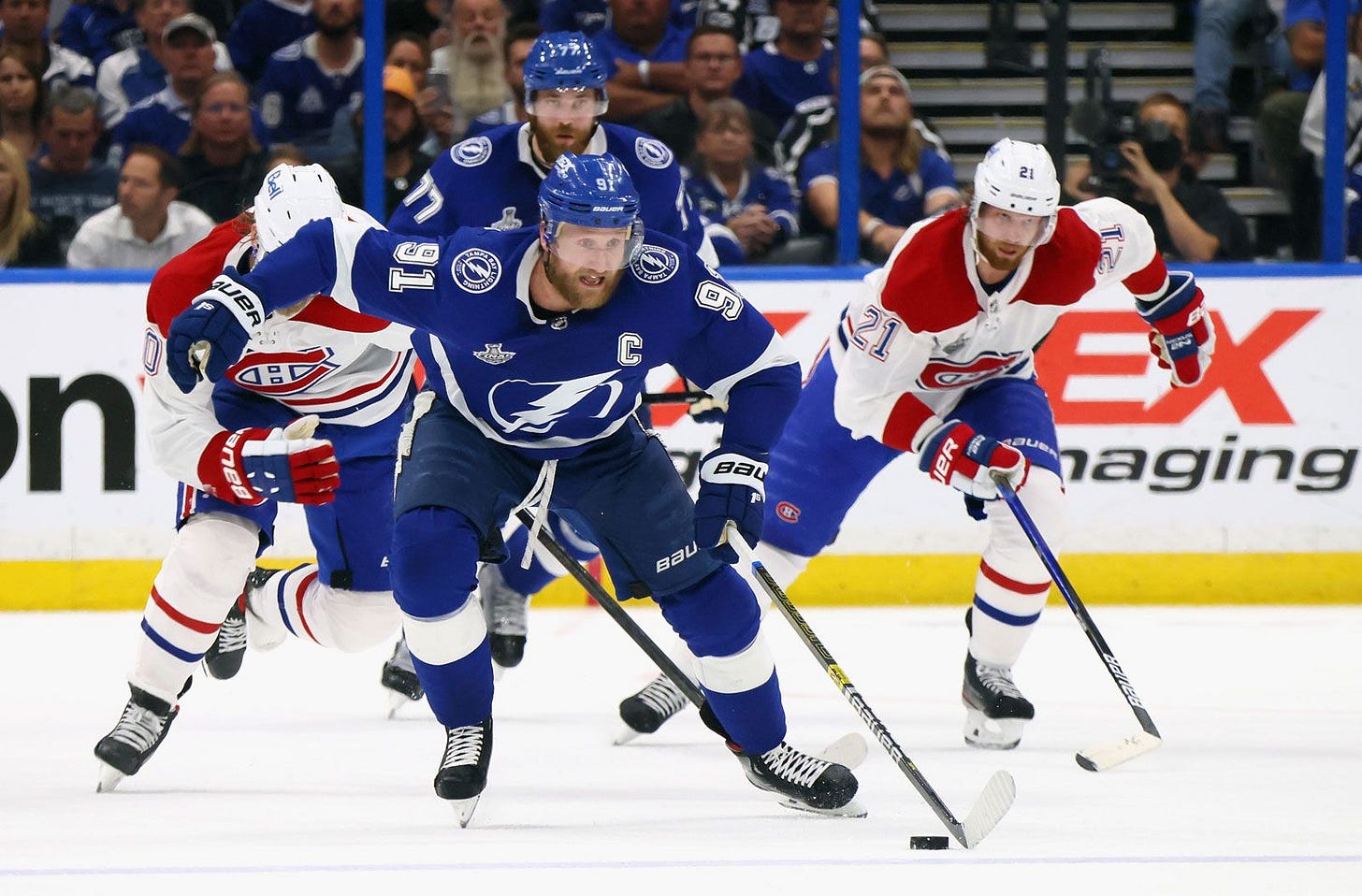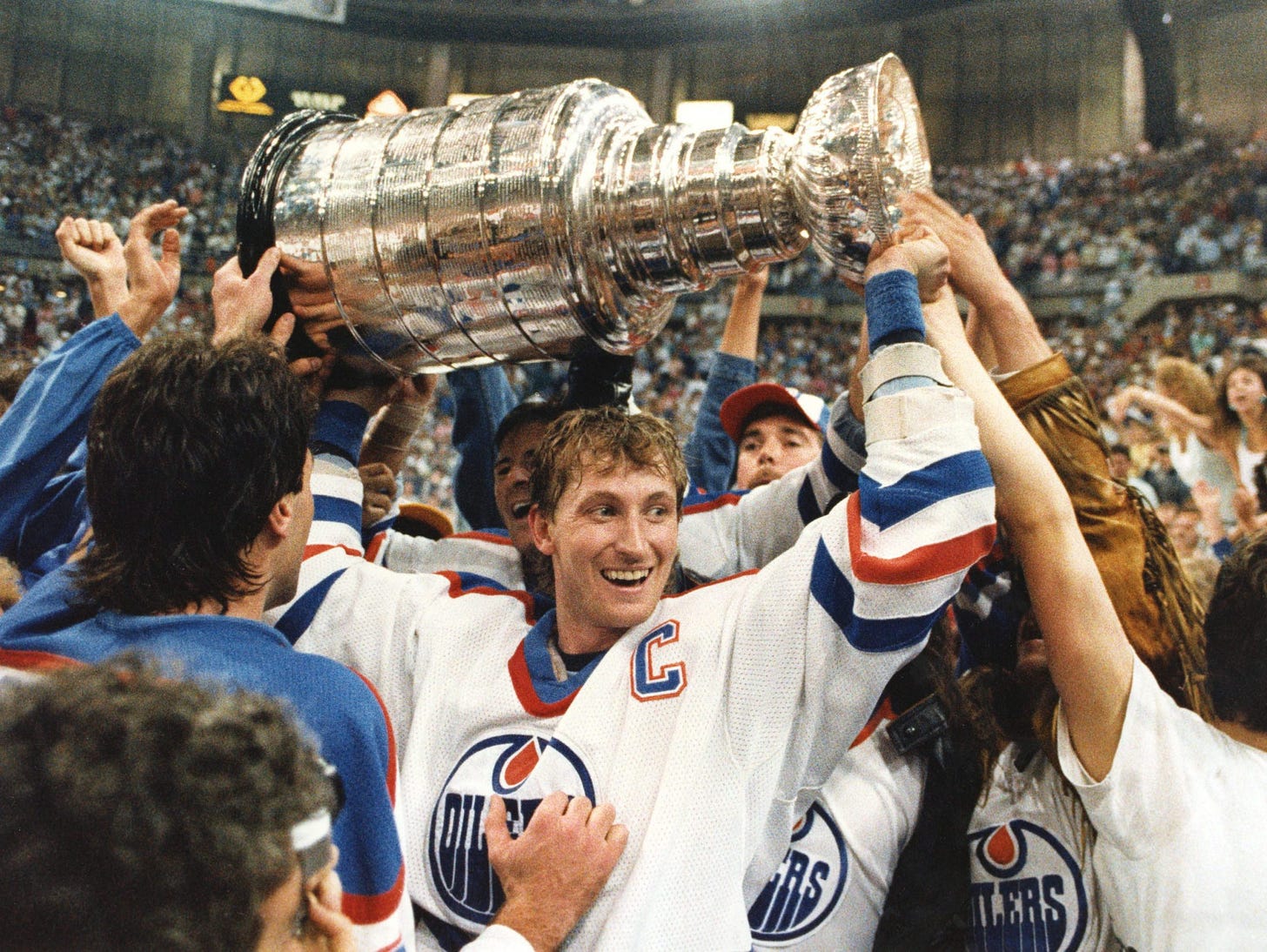How Does Overtime Work in Hockey Playoffs?
What exactly happens when the horn sounds after 60 minutes of deadlocked hockey in the playoffs? Let me break down the beautiful chaos that is playoff overtime.
The puck skitters across the blue line. A defenseman pinches. The winger corrals it, cuts to the middle, fires a wrister through traffic. The goalie never sees it. Lamp lit. Game over.
That, folks, is playoff overtime hockey. Pure, unscripted drama that leaves even the most seasoned hockey writers scrambling for superlatives.
Every Stanley Cup playoff season delivers a buffet of overtime thrillers. We've seen marathon triple-overtime classics that stretch past midnight. We've witnessed unlikely heroes emerge from fourth lines to score series-clinching goals. We've watched goalies stand on their heads for 50+ saves only to be beaten by a fluky deflection off a defenseman's shin pad.
But what exactly happens when the horn sounds after 60 minutes of deadlocked hockey in the playoffs? Let me break down the beautiful chaos that is playoff overtime.
No Shootouts, No Gimmicks, Just Playoff Hockey
Forget everything you know about regular season overtime. When the playoffs roll around, the NHL strips away the 3-on-3 spectacle and shootout skills competition in favor of something much purer.
"Regular season overtime is the appetizer. Playoff overtime is the five-course meal," veteran NHL ref Kerry Fraser told me last year. "It's hockey in its most authentic form."
Here's what happens when a playoff game needs extra time:
Full 20-minute periods of traditional 5-on-5 hockey
Classic sudden-death format: next goal wins, no matter how long it takes
Complete intermissions between overtime periods
No limit to how many periods they'll play
No shootouts, ever
The NHL rulebook spells it out clearly, but ask any player who's been there, and they'll tell you no words can capture what it feels like to play in a game that could end on any shift.
"Your legs burn, your lungs burn, but you don't feel tired until it's over," says former Blackhawks defenseman Brent Seabrook, who knows a thing or two about playoff OT winners. "Adrenaline is one hell of a drug."
A Quick History Lesson
The league hasn't always done overtime this way. According to The Sporting News, the NHL's relationship with extra time has evolved considerably since its introduction back in 1921.
In the early days, they played a full 20-minute overtime period. By 1927, they trimmed it to 10 minutes. During World War II, regular season overtime disappeared entirely due to wartime train scheduling restrictions (seriously).
The modern era has seen more tweaks, but playoff overtime has remained remarkably consistent: full periods, sudden death, no gimmicks. It's part of what makes the Stanley Cup Playoffs the war of attrition that players revere and fans can't look away from.
Playoff OT vs. Regular Season: Night and Day
If you're new to hockey or just need a refresher, the differences between regular season and playoff overtime couldn't be more stark:
Regular season overtime feels like a sprint: three skaters aside, wide-open ice, five frantic minutes ending in a shootout if nobody scores.
Playoff overtime? It's an ultramarathon through quicksand with a piano strapped to your back.
"In the regular season, overtime is designed to end games quickly," explains NHL Network analyst Mike Rupp. "In the playoffs, it's designed to crown a worthy winner, no matter how long it takes."
The differences go beyond just format. As ESPN's NHL rules guide points out, regular season overtime exists partly for TV scheduling and partly to create highlight-reel moments with all that open ice. Playoff overtime exists to separate the champions from the pretenders.
Inside a Playoff Overtime Period
When regulation ends with a tie score, you can feel the building tense up. Even veteran hockey writers sit up straighter in the press box.
Teams retreat to their locker rooms for a full intermission. Coaches diagram plays. Training staffs scramble to rehydrate cramping players. Equipment guys repair broken gear. The ice crew resurfaces the sheet.
Inside the arena, fans don't dare leave their seats. Superstitions intensify. That guy in Section 214 who stood up right before the tying goal? He's not sitting down now, maybe not for hours.
When players return, they've switched ends, just like between regular periods. According to NBC Philadelphia, this creates fairness by ensuring both teams deal with any ice disadvantages equally.
Then, the puck drops. From this moment forward, the next goal not only wins the game but potentially alters careers, legacies, and franchise trajectories.
The Marathon Men
The possibility of multiple overtimes creates legends.
Just ask the 1936 Detroit Red Wings and Montreal Maroons, who played the equivalent of nearly three full games before Mud Bruneteau finally ended it at 176:30 of game time. That's the longest game in NHL history, a record that's stood for almost 90 years.
In more recent memory, Keith Primeau's goal in the fifth overtime lifted Philadelphia over Pittsburgh in 2000. I was still in college for that one, watching in a dorm lounge as midnight turned to 1 a.m., then 2 a.m. By the time Primeau scored, there were maybe five of us left, bleary-eyed but unwilling to miss the conclusion.
"That's the thing about playoff overtime," Stars forward Tyler Seguin told me during their 2020 Cup Final run. "Nobody remembers the games that end three minutes into OT. It's the marathons that make hockey history."
As Yahoo Sports reported, the 2024 playoffs have already delivered multiple overtime classics. Carolina and New York pushed into double overtime in their second-round matchup, testing both teams' depth and stamina early in what promises to be a grueling battle.
Playoff Overtime Strategy: A Chess Match on Ice
Regular coaches become grandmasters when overtime hits. Every line change, every matchup becomes critical.
The old hockey wisdom says overtime is when coaches should "roll four lines" to keep players fresh. But watch closely and you'll notice the subtle shifts in ice time distribution. Top defensemen might see slightly fewer minutes. Fourth-liners might sit for long stretches.
"You're balancing two competing needs," explains former NHL coach Rick Tocchet. "You need your best players out there in key moments, but you can't burn them out if this thing goes multiple overtimes."
Some coaches get conservative, prioritizing defensive structure. Others push the pace, believing hesitation leads to defeat. Ask 31 NHL coaches about overtime strategy and you'll get 31 different philosophies.
What they all agree on, according to Sports Illustrated's coverage, is simplicity: get pucks deep, crash the net, shoot from everywhere.
"Playoff overtime goals aren't usually highlight-reel material," says former NHL sniper Jeremy Roenick. "It's usually some greasy rebound or a seeing-eye shot through traffic. Sometimes it's the guy you least expect who becomes the hero."
The Fan Experience: Cardiac Arrest on Ice
I've covered hundreds of playoff games in my career, but nothing compares to overtime. The press box, normally a haven of professional detachment, transforms. Writers who have seen everything lean forward. Social media managers prepare multiple caption options for the moment that could come any second.
Down in the stands, it's controlled chaos. Fans who were enemies seconds earlier now share a unique camaraderie born of shared torture. Nobody sits. Everyone holds their breath with each scoring chance.
The unique broadcast experience amplifies everything. Networks go commercial-free. Announcers speak in hushed tones, as if they might jinx something by talking too loudly. Every shot gets an audible reaction, even routine saves.
"It's the only time in sports where I physically feel ill from tension," admitted a Bruins season ticket holder to me before Game 5 against Toronto this year. "But I wouldn't trade it for anything."
FAQ: Everything Else You Need to Know
Q: Can playoff games end in ties?
Never. They'll play all night if they have to. The 1936 Red Wings-Maroons game didn't end until 2:25 a.m. local time. The modern record is a 2020 playoff game between Tampa Bay and Columbus that ended at 9:22 of the fifth overtime, with the clock reading 12:22 a.m.
Q: How do penalties work in playoff overtime?
Just like regulation. Two minutes for minors, five for majors. Unlike regular season 3-on-3 OT where penalties create 4-on-3 advantages, playoff overtime penalties result in standard 5-on-4 power plays.
Q: Do players get extra rest between overtime periods?
Yes, full intermissions between each overtime period. Teams get roughly 15-18 minutes to recover, rehydrate, and reset.
Q: Has anyone ever scored on themselves in playoff overtime?
Unfortunately, yes. Just ask Steve Smith of the Edmonton Oilers, who in 1986 accidentally banked a puck off goalie Grant Fuhr and into his own net in Game 7 against Calgary. Or Uwe Krupp, whose skate deflected a puck past his own goalie in a 1994 playoff game. Hockey can be cruel.
Q: Are goalies allowed to leave the ice for an extra attacker in playoff overtime?
Technically yes, but you'd be insane to try it. The sudden-death format means any empty-net goal immediately ends the game.
The Beauty of Playoff Overtime
The greatest thing about playoff overtime isn't just the tension or the moments of euphoria and agony. It's that it strips hockey down to its purest essence.
No gimmicks. No artificial constraints. Just two teams battling until someone finally breaks through.
When a Game 7 overtime arrives, as it did between Boston and Toronto this year, there's nothing more perfect in sports. Two teams that couldn't be separated through seven games and 60 minutes need one more goal to decide everything.
"Regular season overtime and shootouts serve their purpose," Rangers goaltender Henrik Lundqvist told me before his retirement. "But playoff overtime is sacred. It's hockey in its purest form."
So as we dive deeper into the 2024 Stanley Cup Playoffs, embrace the butterflies that come with overtime. The sleepless nights. The heart palpitations. The raw, unfiltered emotions.
After all, playoff overtime isn't just a hockey tradition. It's the ultimate sporting proving ground, where legends are made and heartbreak feels terminal, all because one puck finally found its way home.





